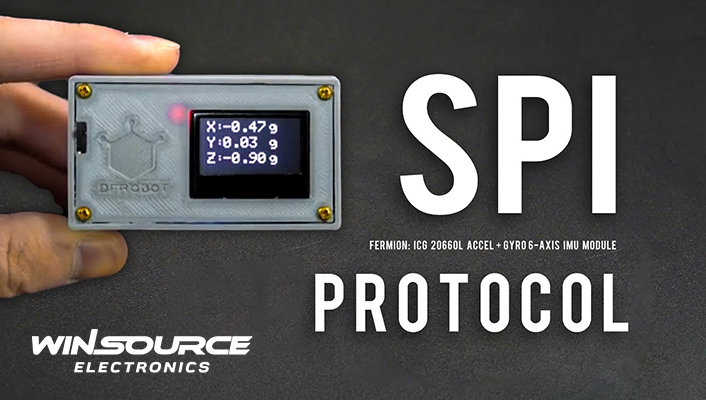
SPI is an interface bus often used to transport data between microcontrollers and tiny peripherals such as shift registers, sensors, and SD cards. It employs separate clock and data lines and a select line to select the device you want to communicate with.
Do you want to use SPI more effectively? WIN SOURCE can assist you with this. Our goal as a reputable provider of electronic components is to provide you with the best service.
You will find the recent hot-selling products here at an affordable price. In this article, we will give some important information about SPI.
Table of Contents
ToggleAdvantages of SPI
● It is more efficient than asynchronous serial.
● The receiving hardware could be as simple as a shift register.
● It is compatible with a variety of peripherals.
Disadvantages of SPI
● It necessitates more signal lines (wires) than other modes of communication.
● Communications must be pre-defined. You cannot send arbitrary quantities of data whenever you wish.
● The controller must control all communications. Peripherals cannot communicate directly with one another.
● It normally necessitates separate CS lines for each device, which might be inconvenient if multiple peripherals are required.
Programming for SPI
SPI peripherals incorporated into many microcontrollers take care of all the specifics of sending and receiving data and can do so at very high speeds.
Because the SPI protocol is so simple, you can create routines that manipulate the I/O lines to transport data in the correct order.
There are two ways to communicate with SPI devices when using an Arduino:
● The commands shift, and shift-out are available. These software-based commands can be used with any pins but are slow.
● You can also use the SPI Library, the microcontroller’s SPI hardware. This is much faster than the previous commands. However, it only works on particular pins.
Importance of SPI:
● When configuring your interface, you will need to select various choices.
● The peripheral will read the data on either the rising or falling edge of the clock pulse. Furthermore, the clock might be termed “idle” whether set to high or low.
● Millions of bytes per second is the maximum speed SPI can work, which may be too rapid for some devices.
● You can modify the data rate to support such devices. The set ClockDivider function in the Arduino SPI library divides the controller clock (typically 16MHz) into multiples of 8MHz to 125kHz to determine the speed.
● The hardware is hardwired to the SCK, PICO, and POCI pins; thus, if you’re using the SPI Library, you must use those pins.
● Keep in mind that you can also utilize any other available output pin(s) for CS to your peripheral device(s) in addition to the dedicated CS pin (which must, at the very least, be set to output for the SPI hardware to function).
So, there is too much to say about SPI, and choosing the perfect one takes a lot of work. To make your job easier, the WIN SOURCE is here. Feel free to consider us because we are ready with the quality types of equipment. We will ensure that you get satisfied service from our shop. So, check out our product category to the top quality SPI!

COMMENTS